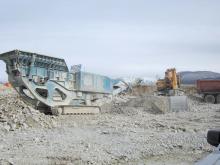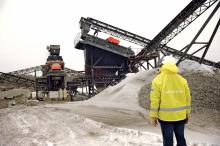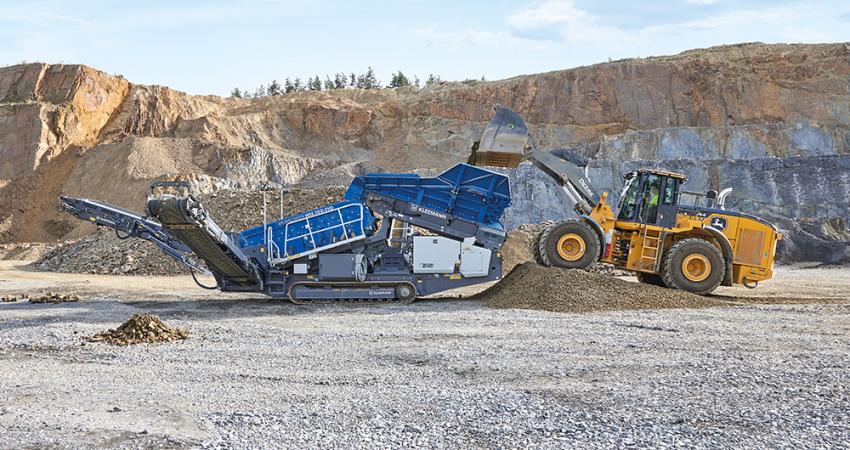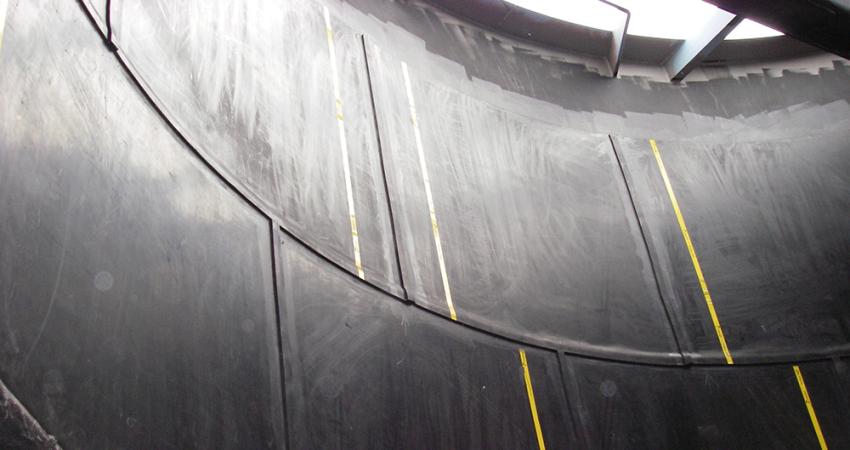
New large-scale projects may provide crucial impetus for growing the aggregates industry in Belarus, while Russia’s industry struggles due to numerous internal and external factors, writes Eugene Gerden.
The
Total investment in the Sitnitsky crushed stone field-based project is estimated at US$381.9 million. Part of the funds will be provided by Eurocement group, with the remainder coming from the Belarus government.
The Sitnitsky site is located 7km from the Mikashevichy area of the Brest region and is operated by the local
The plant will have the capacity to produce 9 million tonnes of crushed stone per year for a near 60-year period. In addition, there is a possibility that its production capacities will significantly increase during the next few years. Payback period of the project will be approximately 11 years.
The first stage of the project is expected to be commissioned in May 2015, with the remaining two stages commencing in October and December 2016, respectively.
The Sitnitsky project is part of a wider Eurocement investment initiative worth around $2 billion. This involves building up to three aggregates plants both in the domestic market and abroad.
The project has strategic importance for Belarus, which is reflected by the fact that its implementation is personally controlled by the President of the country, Alexander Lukashenko, as part of the recent presidential Decree N446 “On some issues of the Granite republican unitary enterprise”, which was signed by the president last year.
The Belarus government has been looking for investors for its Brest aggregates project since 2011. Among the potential investors were some companies from Western Europe, Asia and Russia. In 2011, the Belarus government signed a preliminary investment agreement with the Austrian construction firm
And in addition to attracting foreign investors, the Belarus government plans to continue investing in the development of the national aggregates industry and its ability to draw on indigenous resources. In the case of Granit enterprise, at present its total capacity is estimated at more than 21 million tonnes/year, making it Europe’s largest producer of crushed stone.
Further expansion of production capacities will also allow the Belarus aggregates industry to increase exports to foreign markets, and in particular the Russian market. In the latter case, exports of only crushed stone from Belarus to Russia is currently estimated at 1.5 million tonnes, with the possibility of a significant increase during the next several years.
At the same time there is also a possibility that Belarus may soon become a single supplier of crushed stone and other aggregates to Russia, which may take place in the case of imposition of a ban on further supplies of Ukranian aggregates to Russia, which is currently considered by the Russian government.
So far, Ukraine has accounted for up to 82% of imports of aggregates to Russia. But given the ongoing tensions between Russia and Ukraine due to Russia’s military intervention in the former Soviet state, there is a possibility that its share may significantly decline in the near future. The decline of Ukranian imports may lead to a significant increase of aggregates supplies to Russia from China and other Asian countries.
However, a Eurocement spokesperson has also not ruled out the possibility of the company’s participation in domestic Russian market aggregates projects over the next few years.
In addition, in the case of the Russian aggregates market, despite the current decline, caused by the economic instability in the country, local analysts predict its recovery and further growth in 2015.
According to Alexander Batushansky, general director of Resolution, one of Russia’s leading aggregates sector analyst agencies, the volume of sand production in Russia for the first nine months of 2014 reached 9.3 million m³, down 34% compared to the same period of 2013.
However, much may change at the beginning of 2015, due to construction of the Moscow–St. Petersburg motorway. The planned toll road between Russia’s two great cities, one of the most important projects in the field of road buiding in the country for the last 20 years, will require a large volume of sand, crushed stone and other aggregates.
At present St. Petersburg remains a centre for Russian aggregates production dominated by
St. Petersburg government actively stimulated further development of local aggregates business, which took place through the adoption of new industry laws and the provision of incentives to local producers.
For example, the government has approved a new law, known as “About Subsoils”, which eased the procedure for obtaining licenses for production of aggregates in the region, however this did not prevent the decline of production seen in 2014.
As well as St. Petersburg, the current crisis has also negatively affected other centres of aggregates production in Russia, and in particular Kamchatka.
According to official data from the Kamchatka government, the production of aggregates in the region had increased by 30% between 2007 and 2013. In 2013 total production of aggregates in the region reached 800,700m³. The results for 2014 are not yet disclosed. However, according to predictions, the decline of production may be in the range of 25%-30%.
There is also a possibility that the crisis may affect the production of aggregates in the south of the country, and in particular the Ingushetia Republic, one of Russia’s regions located in the North Caucasus territory, where one of Russia’s largest facilities for the production of aggregates was recently commissioned.
Analysts based at the Russian Association of Producers and Consumers of Aggregates (RAPCA) also predict that the Russian aggregates market may experience a process of consolidation in the coming years, as leading local players currently look for ways of further development through the acquisition of smaller players. Foreign interest is also expected.
This is reflected by the fact that French cement equipment manufacturing giant
According to analysts of RAPCA, in addition to sanctions and the deterioration of Russia’s business environment, further rapid development of the national aggregates market is prevented by the ongoing conflict between two of its leading players, the National Aggregates Company, one of Russia’s largest producers of granite macadam, owned by well-known Russian businessman Yuriy Zhukov, and
According to Sergey Poymanov, a former owner and CEO of Pavlovskgranit, Zhukov forced him to sell his stake in the company and had plans for its hostile takeover. This has resulted in the initiation of a criminal case against Zhukov and his house arrest. According to analysts of RAPCA, the conflict and association with a criminal case has prevented both companies from the implementation of their investment programs.








